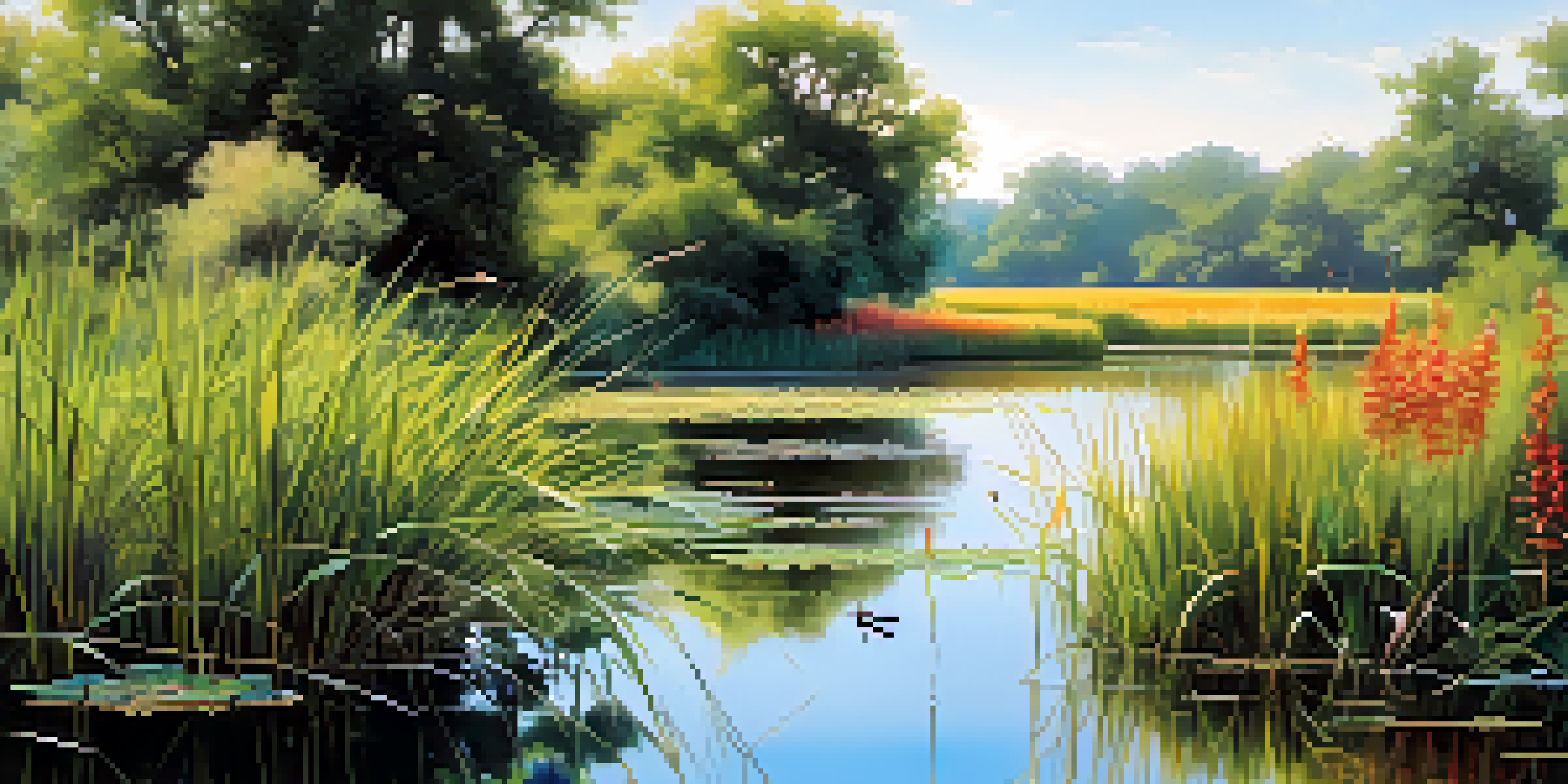Understanding Invasive Species: Definitions and Examples

What Are Invasive Species? A Clear Definition
Invasive species are organisms that are not native to a specific ecosystem and thrive in their new environment, often at the expense of local species. They can be plants, animals, or microorganisms that disrupt the balance of their adopted ecosystem. These species may outcompete native species for resources like food and habitat, leading to ecological imbalance.
Invasive species are not just a threat to biodiversity; they can also undermine the economic stability of entire industries.
To be classified as invasive, a species must establish a population in a new environment and cause economic or environmental harm. For example, the introduction of the zebra mussel in North America has caused significant damage to local ecosystems and fishing industries. Understanding this definition helps clarify why some species are labeled invasive and the challenges they present.
It’s important to recognize that not all non-native species are invasive; some can coexist peacefully with local flora and fauna. However, the term 'invasive' specifically highlights those that cause harm, making it essential for conservation efforts to focus on managing these aggressive species.
How Do Invasive Species Spread?
Invasive species can spread through various means, including human activities, natural events, and trade. For instance, boats and ships can unknowingly transport aquatic invasive species across bodies of water. Similarly, plants sold in gardens can escape cultivation and thrive in the wild, furthering their reach.

Another common method of spread is through global trade, where species hitch a ride on cargo ships or in soil and ballast water. This unintentional movement can introduce invasive species to new environments, rapidly changing local ecosystems. Understanding these pathways is crucial for developing strategies to prevent future invasions.
Invasive Species Disrupt Ecosystems
Invasive species can outcompete native organisms for resources, leading to ecological imbalance and the decline or extinction of local species.
Natural events, like floods and hurricanes, can also disperse invasive species by moving them from one area to another. Once established, these species can rapidly colonize new areas, making early detection and management vital for safeguarding ecosystems.
The Ecological Impact of Invasive Species
Invasive species can have profound ecological impacts, often leading to the decline or extinction of native species. By outcompeting local organisms for resources, they can alter food webs and disrupt natural processes. For example, the introduction of the brown tree snake in Guam led to the decline of several bird species, significantly changing the island's ecosystem.
The introduction of non-native species is often a double-edged sword—what seems like a solution can quickly turn into a problem.
Additionally, invasive plants can alter soil composition and hydrology, affecting the entire ecosystem’s health. Invasive species may also introduce diseases that native species aren't equipped to handle, compounding the threat. This cascading effect highlights the importance of monitoring and managing invasive populations.
The ecological consequences are not just limited to individual species; entire habitats can change due to the presence of invasive organisms. For instance, invasive grasses can change fire regimes in grassland ecosystems, leading to a cycle that favors the invasive species over native ones. This necessitates proactive measures to protect biodiversity.
Economic Consequences of Invasive Species
The presence of invasive species can lead to significant economic consequences, impacting industries such as agriculture, forestry, and fisheries. Farmers may face reduced crop yields due to invasive pests that outcompete or damage native plants. For example, the emerald ash borer has devastated ash tree populations, costing millions in management efforts and lost timber value.
In the fishing industry, invasive species can alter fish populations, making it difficult for local fishermen to maintain sustainable practices. The costs associated with controlling and mitigating the effects of invasives can drain resources from local economies. Understanding these economic impacts helps highlight the importance of prevention and control strategies.
Economic Impact of Invasives
The presence of invasive species incurs significant economic costs across various industries, including agriculture and fisheries, necessitating effective management strategies.
Moreover, invasive species can lead to increased spending on conservation efforts, as governments and organizations work to restore affected ecosystems. This financial burden underscores the need for public awareness and community involvement in combating invasive species.
Real-World Examples of Invasive Species
One of the most notorious examples is the cane toad, introduced in Australia to control pests in sugarcane fields. Instead, it became a destructive force, preying on native wildlife and competing with local species. The cane toad is a prime example of the unintended consequences that can arise from introducing non-native species.
Another example is the Japanese knotweed, which has invaded many parts of Europe and North America. This plant grows rapidly, outcompeting native vegetation and causing significant structural damage to buildings with its roots. Its aggressive nature demonstrates how invasives can disrupt both ecology and human activities.
These examples serve as reminders of the delicate balance within ecosystems and the importance of being cautious about introducing new species. Each case illustrates different pathways and impacts, reinforcing the need for awareness and management to protect native biodiversity.
Preventing the Spread of Invasive Species
Preventing the spread of invasive species requires a combination of public awareness, education, and responsible practices. Simple actions can make a big difference, such as cleaning hiking boots or boat hulls before moving between ecosystems. These small steps help reduce the chances of inadvertently transporting invasive species.
Communities can also play a vital role by participating in local conservation efforts, like removing invasive plants from parks and gardens. Education campaigns can inform people about the risks associated with certain species and promote native alternatives in landscaping. By fostering a culture of stewardship, we can work together to protect our ecosystems.
Preventive Measures Are Essential
Public awareness and community involvement are crucial in preventing the spread of invasive species through responsible practices and education.
Moreover, policies and regulations regarding the trade and movement of species can help mitigate risks. Governments can implement stricter import controls and promote research into effective management strategies. Through these combined efforts, we can help safeguard our natural environments from the threat of invasives.
The Importance of Ongoing Research
Ongoing research into invasive species is crucial for understanding their behavior and impacts, as well as developing effective management strategies. Scientists study how these species interact with native organisms and how they adapt to new environments. This research informs conservation efforts and helps identify potential future threats.
Additionally, advancements in technology, such as genetic studies and remote sensing, are enhancing our ability to monitor and manage invasives. By understanding the biology and ecology of invasive species, researchers can recommend targeted strategies that minimize harm to native ecosystems. This knowledge is essential for proactive management.

Moreover, collaboration between researchers, policymakers, and local communities is vital for successful outcomes. Sharing findings and best practices can empower communities to take action and contribute to the broader effort of managing invasive species. Ultimately, investing in research is an investment in the health of our ecosystems.